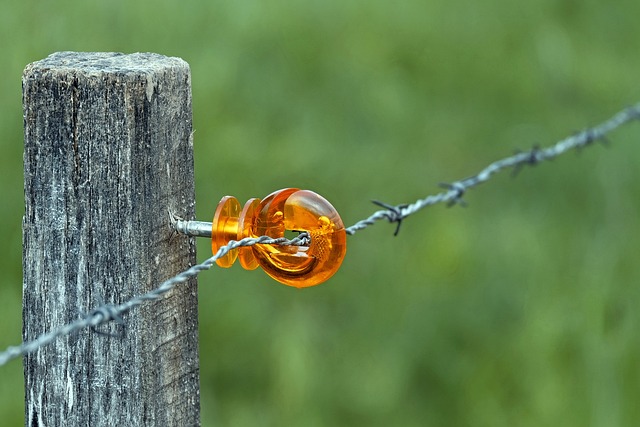Fencing staining and sealing is an essential practice for maintaining the beauty and durability of your wooden fences. This article guides you through the entire process, from understanding the purpose of staining—protecting wood from elements and enhancing aesthetics—to selecting the perfect stain match for your fence. We’ll delve into the science behind sealing, offering a step-by-step approach to application, and providing expert tips for long-lasting results. Additionally, we’ll highlight common mistakes to avoid, ensuring a seamless and successful fencing transformation.
- Understanding Fence Staining: Why and When to Stain
- Choosing the Right Stain for Your Wood Fence
- The Sealing Process: Protection Beyond Staining
- Step-by-Step Guide to Fencing Staining and Sealing
- Maintenance Tips for Longevity of Stained and Sealed Fences
- Common Mistakes to Avoid During Fence Staining
Understanding Fence Staining: Why and When to Stain
Fence staining is more than just enhancing the aesthetic appeal of your wooden fence; it’s a vital process that protects your investment. Staining acts as a barrier against the elements, preventing rot, mold, and mildew from damaging the wood. It also helps to seal in natural oils, preserving the fence’s color and texture.
You should consider staining your fence regularly, typically every 1-3 years, depending on exposure to sunlight, weather conditions, and the quality of the stain used. Early signs of wear and tear, such as fading or splotchy discoloration, indicate it’s time for a fresh coat of stain. Regular maintenance not only keeps your fence looking its best but also extends its lifespan.
Choosing the Right Stain for Your Wood Fence
When considering fence staining and sealing, selecting the appropriate stain is a crucial first step. Different types of wood fences require specific stains to enhance their natural beauty while offering protection. For example, a water-based stain is ideal for those who prioritize low odor and quick drying times, especially in close proximity to windows or indoor spaces. On the other hand, oil-based stains provide deeper colors and longer durability, making them suitable for areas with high sun exposure or where you want a more vibrant finish that lasts.
The type of wood also plays a significant role in stain selection. Natural wood tones vary widely, from warm browns to cool grays, so choosing a stain complementary to your fence’s existing color is essential. Light-colored woods may require clear or semi-transparent stains to protect without altering the wood’s natural look, while darker woods can accommodate richer, more opaque stains for added depth and character.
The Sealing Process: Protection Beyond Staining
The sealing process is an essential step beyond simply staining your wooden fence. While staining enhances the visual appeal and color of the wood, sealing provides a protective layer that goes deeper. Sealing acts as a barrier against moisture, UV rays, and other environmental factors that can damage the wood over time.
By sealing your fence, you’re not just preserving its aesthetics but also extending its lifespan. A good seal prevents water penetration, which can cause rot and weaken the fence structure. It also protects against UV radiation, which can fade and dry out the wood. This dual protection ensures that your wooden fence remains sturdy, vibrant in color, and free from the detrimental effects of weather conditions.
Step-by-Step Guide to Fencing Staining and Sealing
Step-by-Step Guide to Fencing Staining and Sealing
1. Preparation: Begin by cleaning your wooden fence thoroughly. Remove any debris, dirt, or existing stains using a pressure washer or a brush with mild detergent. Dry the fence completely before proceeding. Inspect for any damaged or loose boards, repairing or replacing as needed. This step is crucial to ensure optimal adhesion of the stain and sealant.
2. Staining: Choose a high-quality wood stain that suits your desired color and finish. Apply the stain using a brush or roller, following the manufacturer’s instructions for recommended coverage. Start from one corner and work your way across, ensuring even application. Allow the first coat to dry completely, usually within 24 hours. Lightly sand any visible streaks or spots for an even tone, then apply a second coat if a deeper color is desired.
Maintenance Tips for Longevity of Stained and Sealed Fences
Regular maintenance is key to keeping your stained and sealed fence in top condition, ensuring its longevity and preserving its aesthetic appeal. Start by cleaning the fence regularly using a soft brush or sponge and mild soap to remove any dirt or debris that might accumulate. Avoid harsh chemicals, as they can strip away the protective seal. After cleaning, inspect the fence for any signs of damage, such as cracks, splinters, or rot, and repair these issues promptly.
To maintain the color and protection, reapply a fresh coat of stain every 2-3 years, depending on exposure to weather conditions. Sealers should also be reapplied periodically, typically every year, to maintain their barrier against moisture, UV rays, and other environmental factors. Consistent care will guarantee that your fence stays beautiful and durable for many years to come.
Common Mistakes to Avoid During Fence Staining
When staining your wooden fence, there are several common mistakes to avoid for optimal results and longevity of the finish. One of the most frequent errors is failing to properly prepare the fence surface. This includes not sanding rough or splinters, leaving old stains or paint behind, or missing spots entirely. A smooth, clean surface is essential for a good bond between the stain and wood. Neglecting this step can result in an uneven, patchy finish that won’t last long.
Another mistake to steer clear of is selecting the wrong type of stain for your fence’s needs. Different stains offer various levels of protection against fading, water damage, and UV rays. Using a product unsuitable for exterior wood or failing to consider factors like climate and sun exposure can compromise the fence’s appearance and durability over time. Always choose a high-quality, weather-resistant stain designed for outdoor use and follow the manufacturer’s instructions for application.
